WORKING WORMS
Muse Science Magazine for Kids
|Muse November-December 2024: Pets on the Mind
DON'T JUST THROW THOSE TABLE SCRAPS AWAY! LET A BOX OF WORMS TURN THEM INTO SOMETHING USEFUL.

Rhonda Sherman loved taking care of about 30,000 worms, and that’s just counting the ones she had at work.
They lived in two bins inside her worm barn, but you wouldn’t know they were there just from lifting the lid. Reach into the first few inches of their bedding, however, and you’d find them, wriggling and munching away on decomposing matter. Another way to know they were in there was the surprisingly fresh, pleasing aroma.
“When the lid is on, you won’t smell anything,” Sherman explains. “When you open the lid, it just smells like the forest floor.”
Composting Heroes
Sherman’s big worm barn (part of the Compost Learning Lab) still stands in the middle of a 1,500-acre field laboratory at North Carolina State University. It looks just like an enormous farm. For more than three decades, Sherman worked in the university’s Department of Horticultural Science. She is an expert in vermicomposting, or breaking down food waste with the help of worms. Since 1993, she has spread the word: Not only can worms eat your leftovers, but they can also make something valuable in the process.
“They can take your garbage and turn it into castings,” she says. When worms eat compost, they leave behind castings, or poop. Worm poop contains the nutrients that make vermicompost so useful.
Just add a little vermicompost to regular soil, Sherman says, and you end up with larger, faster-growing plants that produce more food.
“That’s something [you] can tangibly see,” Sherman says. “ ‘Wow, my pet worm did that!’ Then your worm becomes a superhero with superpowers.”
Vermicomposting isn’t just good for the environment— it can be profitable, too! A cubic yard of regular compost, Sherman says, may sell for $30. That same amount of vermicompost can sell for 10 times as much.
How to Make a Worm Bin
Dit verhaal komt uit de Muse November-December 2024: Pets on the Mind-editie van Muse Science Magazine for Kids.
Abonneer u op Magzter GOLD voor toegang tot duizenden zorgvuldig samengestelde premiumverhalen en meer dan 9000 tijdschriften en kranten.
Bent u al abonnee? Aanmelden
MEER VERHALEN VAN Muse Science Magazine for Kids
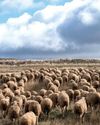
Muse Science Magazine for Kids
ANIMAL FIREFIGHTER TO THE RESCUE
Can animals help manage the risks of deadly wildfires?
3 mins
Muse July 2025: The Story Behind Wildfires
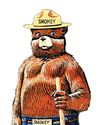
Muse Science Magazine for Kids
FIRE DANGER
WHY THE RISK OF WILDFIRES KEEPS GROWING
4 mins
Muse July 2025: The Story Behind Wildfires
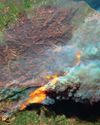
Muse Science Magazine for Kids
The Miller NEW Normal
WHAT TODAY’S WILDFIRES TELL US ABOUT OUR FUTURE
8 mins
Muse July 2025: The Story Behind Wildfires
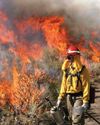
Muse Science Magazine for Kids
WOMEN AND FIREFIGHTING: A GOOD FIT
Jessica Gardetto is a firefighter. Her father was, too. “I grew up with my dad coming home smelling like wildfire and covered in soot,” she says.
1 min
Muse July 2025: The Story Behind Wildfires
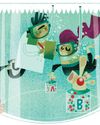
Muse Science Magazine for Kids
What is happening on your fingertips when they get all wrinkly in a hot tub?
—Felix G., age 10, Montana
1 mins
Muse July 2025: The Story Behind Wildfires

Muse Science Magazine for Kids
WHEN the SMOKE CLEARS
THE LINGERING EFFECTS OF THE RECENT PACIFIC PALISADES AND ALTADENA EATON FIRES
6 mins
Muse July 2025: The Story Behind Wildfires

Muse Science Magazine for Kids
PICKING TEAMS
Keep it fair with a strategy that relies on geometry.
2 mins
Muse July 2025: The Story Behind Wildfires

Muse Science Magazine for Kids
SHAN CAMMACK
WILDLIFE BIOLOGIST AND FIRE SAFETY OFFICER
3 mins
Muse July 2025: The Story Behind Wildfires

Muse Science Magazine for Kids
Scientists Create Mice With Woolly Mammoth-Like Fur
RESEARCHERS AT A COMPANY IN TEXAS ARE WORKING TO CREATE A LIVING ANIMAL THAT RESEMBLES THE EXTINCT WOOLLY MAMMOTH. Recently, they produced mice with traits of the large mammal. The mice all have coats with mammoth-like fur, and some of the small mammals also have genes that help them store fat. Both features would help the animals survive in the cold Arctic, where the woolly mammoth once lived.
1 min
Muse July 2025: The Story Behind Wildfires

Muse Science Magazine for Kids
Cool Sunshade Added to the Nancy Roman Space Telescope
THE NANCY ROMAN SPACE TELESCOPE IS A NEW TELESCOPE THAT NASA IS BUILDING AND WILL LAUNCH INTO SPACE, LIKELY IN EARLY 2027.
1 min
Muse July 2025: The Story Behind Wildfires
Listen
Translate
Change font size

